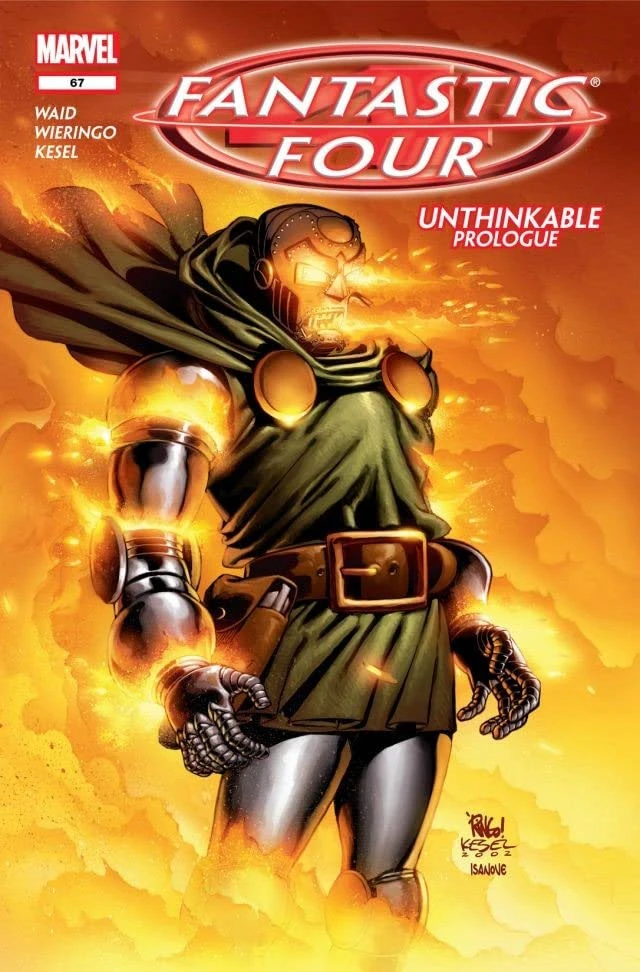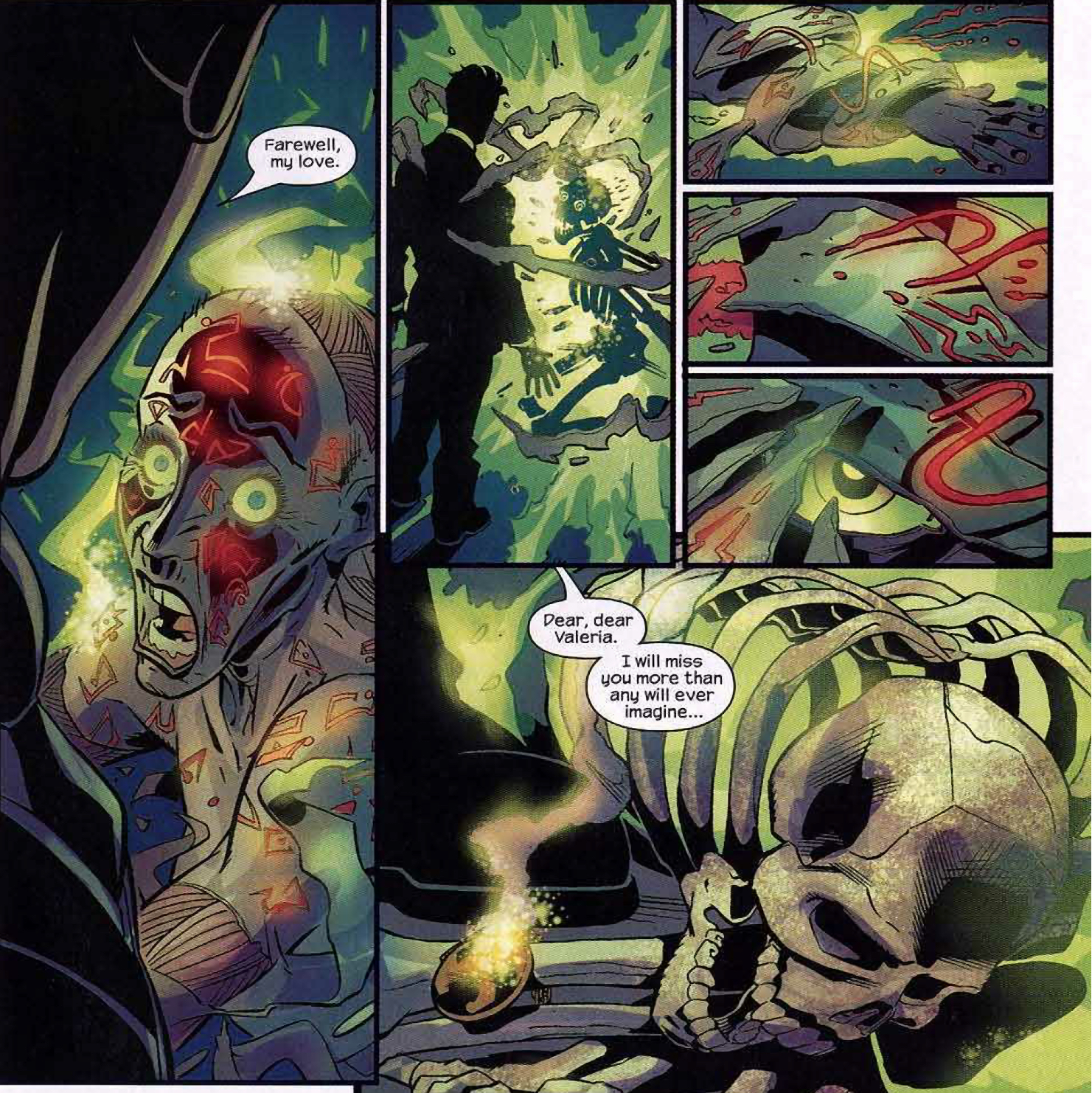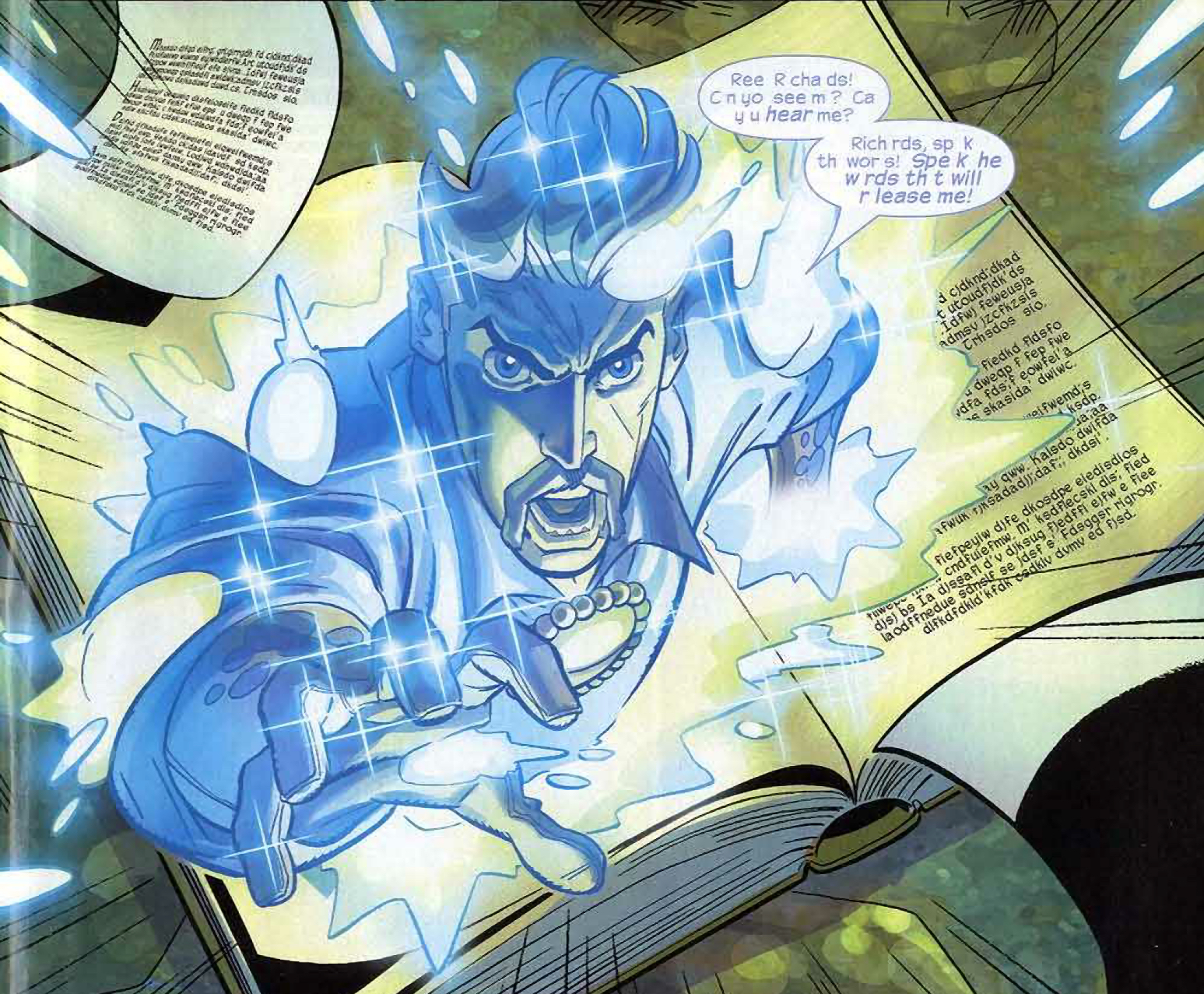
This is the big one: The story that defines Mark Waid’s celebrated F4 run. It’s pretty horrific, actually.
Issue #67 is a “prologue” in which we learn what happened to the original Valeria many years ago.
Doctor Doom took her skin and turned it into armor.

Yuck.
Doctor Doom is sick of losing over and over to his rival, Reed Richards. Finally accepting that he cannot defeat Reed using science, Doom turns to sorcery. Remember when the absent Reed Richards forced Johnny to ask Doom to help deliver Susan’s baby, Valeria?

Well, it turns out Doom magically implanted a trigger word in the girl.
When she says “Doom” out loud, she becomes the conduit for Doom’s magic and he takes her.

It’s the first word the baby says.

And on top of that, the magic work conjures three demons who kidnap Franklin and take him to a version of Hell.
Putting together Valeria’s first word and the sudden appearance of demons, the team figures out that Doctor Doom has taken their baby.

Instead of winning, Doom uses Mindless Ones and captures the team. He forces the father to make a Sophie’s choice between Valeria and Franklin. One will be freed. One will be taken to Hell. Reed chooses.

Reed picks Franklin to go to Hell, while the FF undergo Doom’s tortures.
He then tortures Johnny, Ben and Sue and imprisons Reed and puts him in an occult library–forcing Reed to fight him with magic. Of course he’s going to lose that competition, but Doctor Strange provides some unexpected help.

Reed gets free, rescues his teammates, and they go to Hell to save Franklin.
The team ultimately saves Franklin, but Doom is able to scar Reed’s face before the bad Doctor ends up being taken by his own evil demons.
With this story, Mark Waid reclaims the numbering from the original Lee/Kirby run on Fantastic Four.
The repercussions from this reverberate for about a year’s worth of comics. I know serialized comics can’t ever fundamentally change the characters–the next writer needs to have the same basic toys to play with, and the concepts have to be kept relatively static for future generations of marketers and movie-makers. But that doesn’t make any one writer’s work any less impactful. I prefer to think of long runs on books as “versions” of characters (because clearly Sue can’t still be 30 something over three decades after she got her powers), and when a writer moves on, his story ends.
